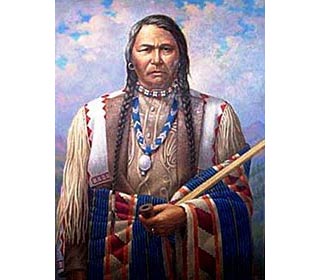Fast Facts about the History of Nevada Indians
The climate, land, history, environment and natural resources that were available to the indigenous Indian tribes in Nevada resulted in the adoption of the Southwest and Great Basin cultures. - Name of State: Nevada
- Meaning of State name: The mountain ranges of California were called Sierra Nevada (snowy range) by Spanish sailors. The name of the new territory was shortened to Nevada and named accordingly in 1859
- Geography, Environment and Characteristics of the State of Nevada: Mountains, deserts and the Colorado River Canyon
- Culture adopted by Nevada Indians: Southwest Cultural Group and others adopted the Great Basin culture
- Languages: Southern Athabaskan (Apachean) language, Shoshonean or Uto-Aztecan
- Way of Life (Lifestyle): Nomadic Hunter gatherers
- Types of housing, homes or shelters: Hogans
History Timeline of the Nevada Indians
Other early tribes included the Omaha, Ponca, Oto-Missouria, Ioway, and Kansa. The Apache, Lakota, Crow, Kiowa, Cheyenne, and Arapahoe inhabited West Nebraska. - 10,000 B.C. : Paleo-Indian Era (Stone Age culture) the earliest human inhabitants of America who lived in caves and were Nomadic hunters of large game including the Great Mammoth and giant bison
- 7000 BC: Archaic Period in which people built basic shelters and made stone weapons and stone tools
- 1763: Treaty of Paris
- 1775: 1775 - 1783 - The American Revolution.
- 1776: July 4, 1776 - United States Declaration of Independence
- 1803: The United States bought the Louisiana Territory from France for 15 million dollars for the land
- 1812: 1812 - 1815: The War of 1812 between U.S. and Great Britain, ended in a stalemate but confirmed America's Independence
- 1830: Indian Removal Act
- 1832: Department of Indian Affairs established
- 1849: Captain Hunt leads the first wagon train, the Jayhawkers, to California via the Mormon Trail. The high death toll lead to the name of "Death Valley"
- 1855: Treaty of friendship between the Paiute and Shoshone Indians and the US signed at Haws Ranch
- 1860: Paiute War also known as Pyramid Lake War, Utah Territory, (now Nevada)
- 1861: 1861 - 1865: The American Civil War.
- 1862: U.S. Congress passes Homestead Act opening the Great Plains to settlers
- 1863: Western Shoshone Indians sign treaty of Ruby Valley, signed by the Te-Moak
- 1864: Nevada was admitted to the Union
- 1864: The Snake War (1864–1868) was fought by the U.S. army against the "Snake Indians" which was the settlers term for Northern Paiute, Bannock and Western Shoshone bands who lived along the Snake River. Fighting took place in Oregon, Nevada, and California, and Idaho
- 1865: The surrender of Robert E. Lee on April 9 1865 signalled the end of the Confederacy
- 1880: 1880 Chief Winnemucca died. In 1883 Sarah Winnemucca writes the book "Life among the Piutes" and establish Nevada's first school for Native Americans
- 1887: Dawes General Allotment Act passed by Congress leads to the break up of the large Indian Reservations and the sale of Indian lands to white settlers
- 1911: Battle of Kelley Creek in Nevada. A small group of Bannock and Shoshone killed four men in an incident known as the Last Massacre. They were followed by a posse to Kelley Creek. 9 people were killed
- 1969: All Indians declared citizens of U.S.
- 1979: American Indian Religious Freedom Act was passed
History of Nevada Indians - Destruction and Decline
The history of the European invasion brought epidemic diseases such as tuberculosis, cholera, influenza, measles and smallpox. The Native Indians of Nevada had not developed immunities against these diseases resulting in huge losses in population. Exploitation including the leverage of taxes, enforced labor and enslavement were part of their history, taking their toll on the Nevada Indians. |
